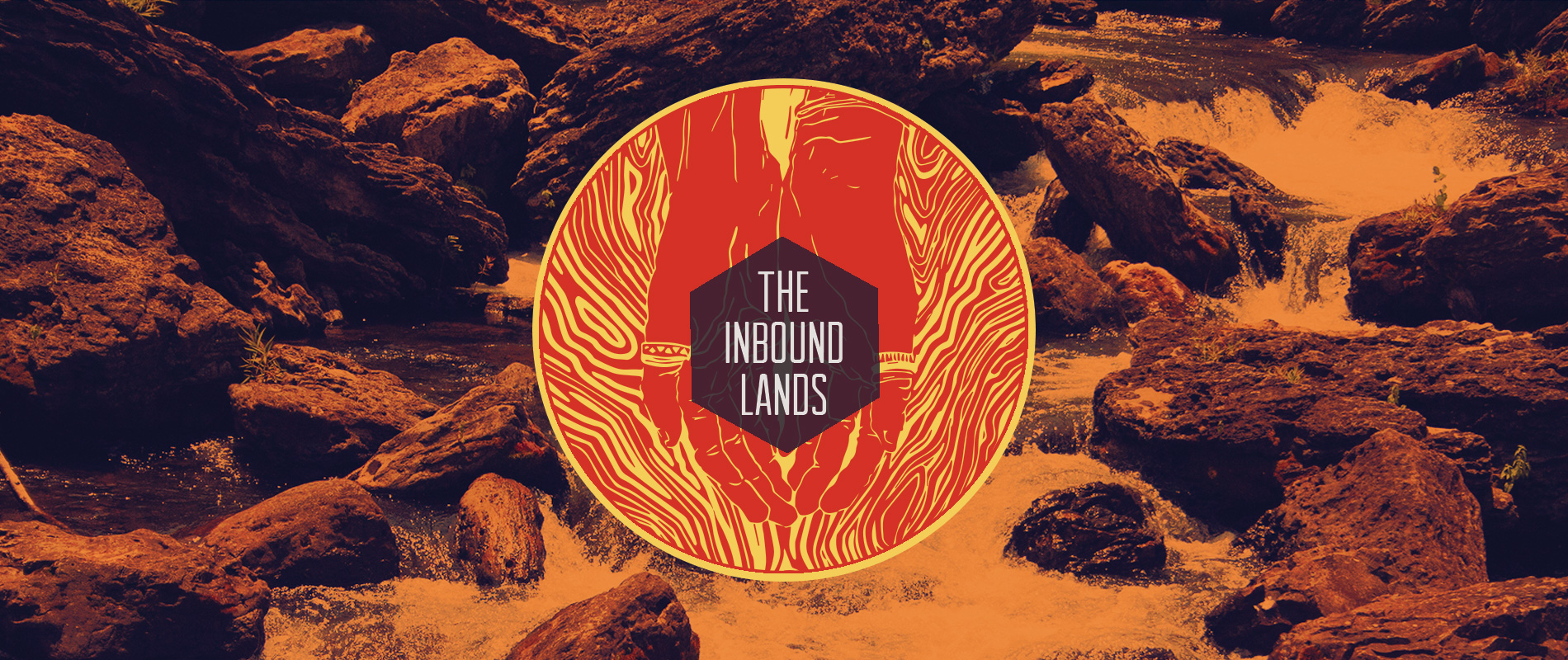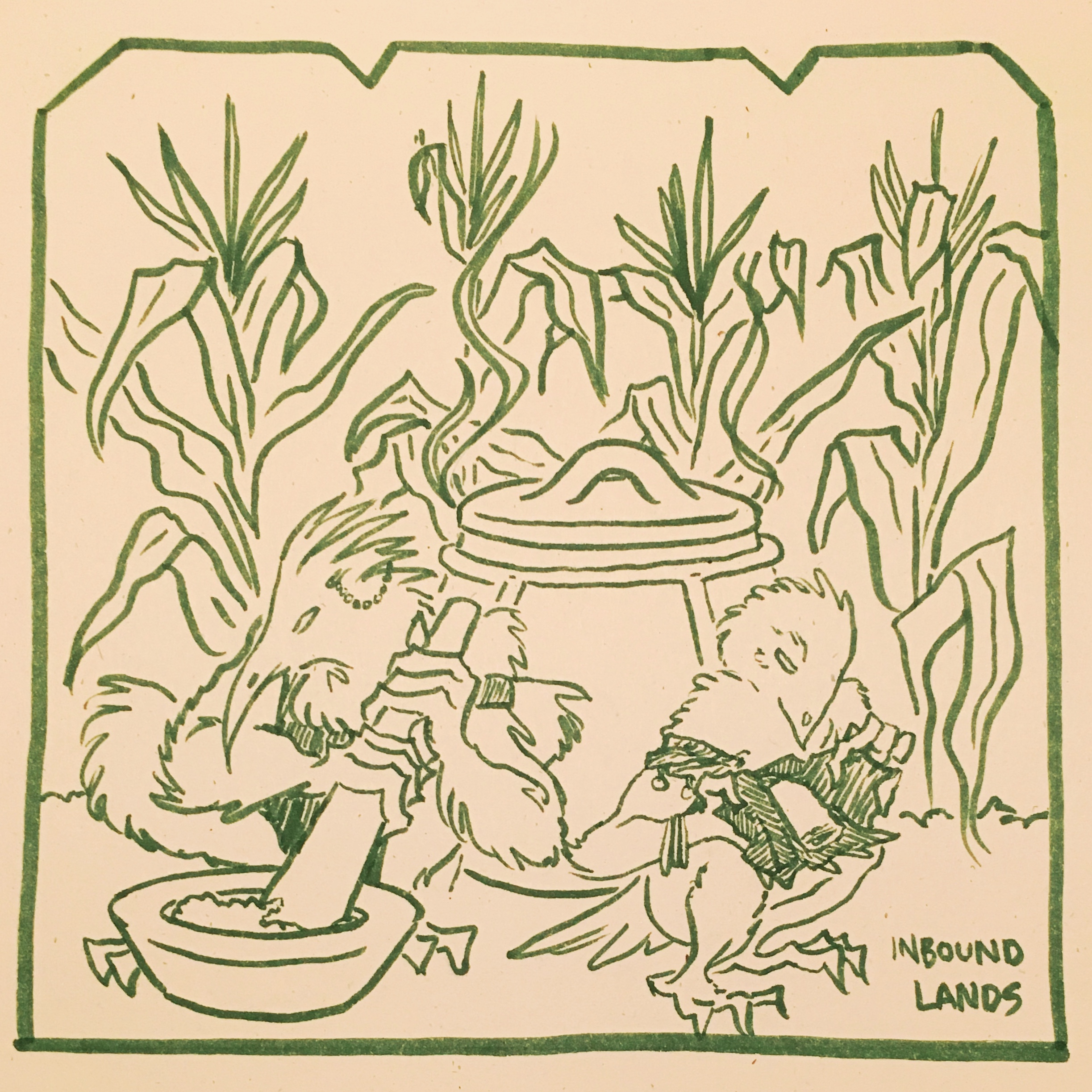Tamai'
[tah-MY-ee]
The Tamai' is a traditional Maninhkan dish. Due to its extremely portable nature, it has traveled up through The Inbound Lands, and is a popular dish wherever ha'pa is found.
Linguistic Deviation
Because of its deviation from normal Ni'kashigan vocabulary, the name "Tamai'" (and some nomenclature used to describe steps of the process) is considered by linguists to be a loanword from an older civilization, and use of the term is more popular in the southern areas of Ochi Maninhka, in Ochi Oxta, and among Southern Walkingfolk. In Ochi O'hka and Ochi Ohkanska , it is known as Watsutsegon Othishin, or simply as othishin.History
The process of cooking tamai' is a lengthy one, and is typically done together by the social group. It is used to celebrate special events that draw the community together for various reasons, and is a part of the farewell traditions to send off community members who are leaving for service, providing them with supplies of fresh tamai' to take with them after the celebratory meals conclude.
Execution
Foundations: Nixtamal and Watanazoe
Harvested ha'pa is gathered by the community, and cleaned by hand. Once dried, the kernels are then bathed in a pickling lime mixture, usually made from crushed burnt seashells, or from wood ash. The mix of dry ha'pa and lime is heated; the chef must be careful not to boil it, as it makes the result bitter, and not to touch it, as the lime makes the mixture initially very caustic. Left to sit and cool overnight, the steep water, or nehayote, is drained, and the kernels are then washed several times the following morning, creating a transitional product sometimes referred to as nixtamal. Quantities of lime used vary based on the type of ha'pa kernel, how long it has been dried, and the altitude in which it is steeped, but you are able to tell that it is ready if the shells of the ha'pa peel off easily when rubbed by hand. The resulting watanazoe differs from ha'pa kernel in key ways: it becomes more digestible, and as such, is more nutritious. It provides higher amounts of calcium and niacin (Vitamin B3) that are better absorbed by the body, adds trace minerals from the ash, and lowers the acidity. It helps remove toxins from ha'pa crops due to mold, and increases the ability of the body to process iron. The addition of lime lengthens the shelf life of foods made primarily from watanazoe. And finally, the process of nixtamalization changes the structure of the ha'pa kernel itself, creating a thickening agent when used whole in soups, and allowing the ground grains to stick to each other, forming the masa.Preparation: Masa on Watsutseqa
Once washed, the watanazoe is ground: either by milling machine, or by hand using a mortar and pestle or, in some areas, by way of a metate, a flat quern with rolling handstone. If watanazoe is left to dry and later used whole, soaking the kernel overnight before grinding or cooking is a must. The ground watanazoe is ready to use. At this point, it is mixed with water (and less traditionally, whipped lard or oil) to produce masa, a corn dough. Fresh ha'pa husks, or watsutseqa, are gathered. Using a flat spreading tool or the large back of a spoon, the masa mixture is spread onto the leaves, before wrapping it up into square or triangular packages, sometimes tied with thinner strips of husk. Fillings may be added to the masa before wrapping, and can feature a range of ingredients including fauna meats, vegetables or legumes, cactus, wild greens, insects, fruits, and seeds to create a range of savory, umami, or sweet dishes. Variations exist, with chefs using patano instead of watsutseqa, especially in Ochi Oxta, where a thicker tamai' is preferred. The sides of the masa are usually built up into a bowl shape, with fillings added within, before folding the dough over itself to form a lid, and wrapping it with leaves.Cooking, or the Pib
Cooking the tamai' is done several ways, but the most popular are via the pib, a sunken oven, or, for travelers, by the steam pot over a regular firepit. In both cases, additional layers of husks or other leaves are added both below and above the tamai', to create air pockets to trap steam as well as prevent the wrappings from burning. The additional leaves do not need to be edible, but it is important that the traveler does not use any of the number of ^hpizhizhan'pe flora often found on the trail! As the food steams, usually over the course of a few hours, the chef will often prepare side dishes such as dipping sauces or vegetables to accompany the meal, or, if the luxury of extended mealtime is not available, the chef may make simpler dishes such as beans and masa tortillas or flatbreads to eat in the moment, saving the tamai' for later eating or as handfood while traveling.Observance
In wartime against the Bean, it was common for warriors to use the leaves of fallen bean, known as "fronds," as stuffing for the steam pot, as part of preparations before battles. The mild hallucinogenic effect - a sense of calmness and disconnect, sometimes with heightened visual or auditory senses accompanied by physical numbness - was imparted onto the food, whose calories served as a stabilizer to cancel or lessen any negative symptoms of hallucinations, panic, or stupor. Those who ate these were believed to take on the emotionless, self-sacrificing drive of the Bean, making them capable of warring selflessly for the greater victory.
In modern day, Bean fronds is a primary (and consensual) export by the Beanfolk, provided specifically as recreational drug. It is still used with the tamai' for certain ritual.
Outbound Notes and References
Artifacts referencing Tamai' include:
- 6:31 + Inktober [HUSKY], 2019
Influence for Tamai' includes:
Though many indigenous cultures in the Americas have a tamales-style dish, much of the influence for the tamai' comes from traditional foodways from Mexico, which is deeply tied to the traditions I have learned from my mother and our community. I highly encourage you to seek out an opportunity to participate in a tamalada! In the meantime, you may learn a little more about tamales and their histories here:- This is a different style than how we make them, but this is a good look at the process of cooking:Michoacan style Corundas, De Mi Rancho a Tu Cocina
- This uses banana leaves, but is another good process video. Ancient MAYAN FOOD - Jungle Cooking in MAYA VILLAGE in Quintana Roo, Mexico!, Mark Wiens
- A Brief History Of Tamales, Claudia Alarcon, part of Foodways of Mexico, Past, Present and Future series, sponsored by the Mexican Center at the Teresa Lozano Long Institute of Latin American Studies at the University of Texas at Austin.
- About Nixtamalization: What is Nixtamalization?, CIMMYT, The International Maize and Wheat Improvement Center
- Learn How to Make Hominy Corn, excerpt from "Beautiful Corn" by Anthony Boutard





So, Tamales, but optionally hallucinogenic. You did a LOT of research here; most of this is actually how you make tamales, yes? side note; I think that worrying for your life historically helps in combat. I think a barbiturate drug like you describe would actually hinder fighting ability, whatever the people may believe.
Yes, these are definitely based on Tamal! I did this as part of Inktober, and it was my way of approaching the "husky" prompt...and also is my way of preserving this aspect of my culture, and honoring it by giving it space to live in this created world. I think the overall process is a fascinating one, and displays complex wisdoms of dietary and chemical sciences not often attributed to indigenous populations...so including these steps and their information is important to me. Plus, maybe it will inspire someone to make a tamale! =) As for the hallucinogenic aspects, well: perhaps there are reasons that the Ni'kashiga spent so much time fighting the Bean! Having never had a tamai' made with frond, and lacking their physiology and motivation, I cannot say if I would have the same cultural response in battle or not.